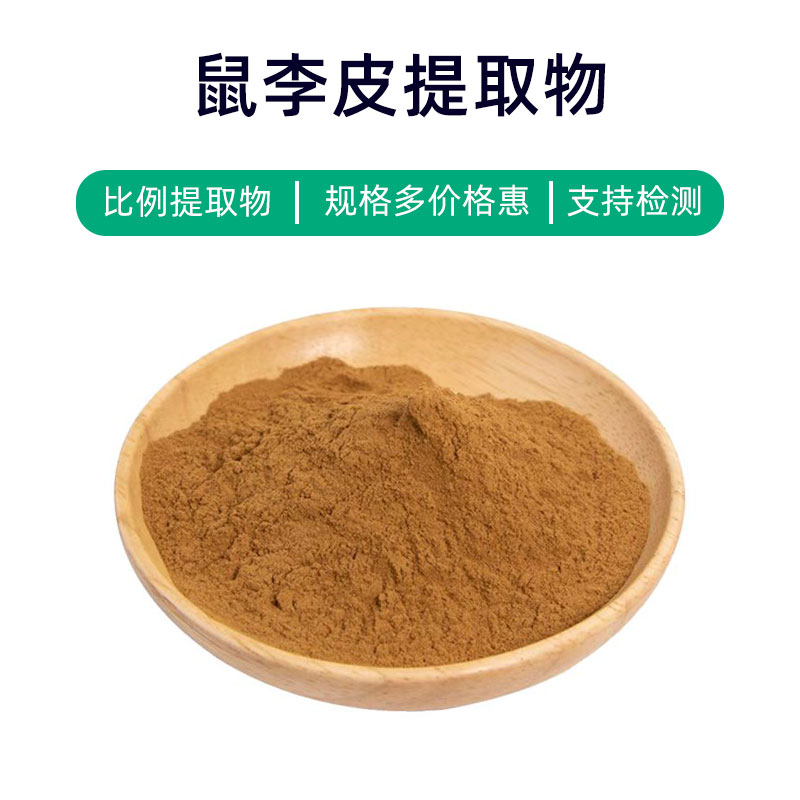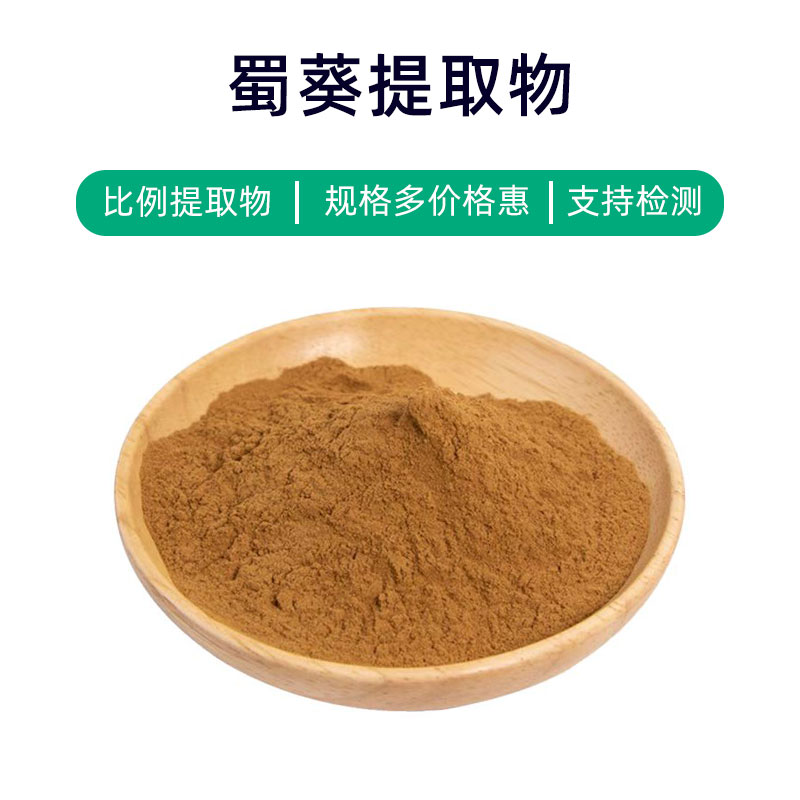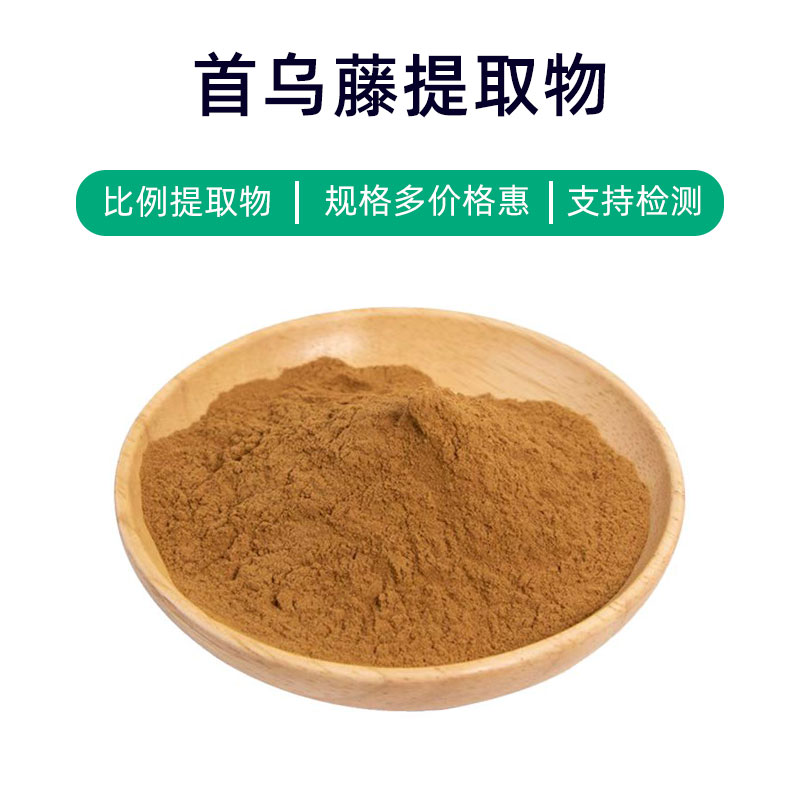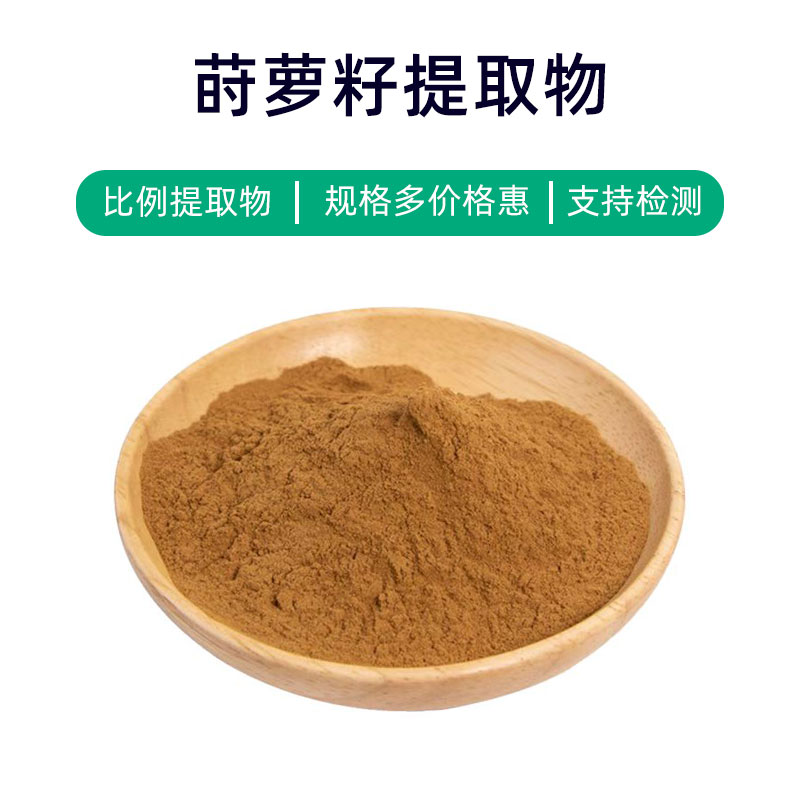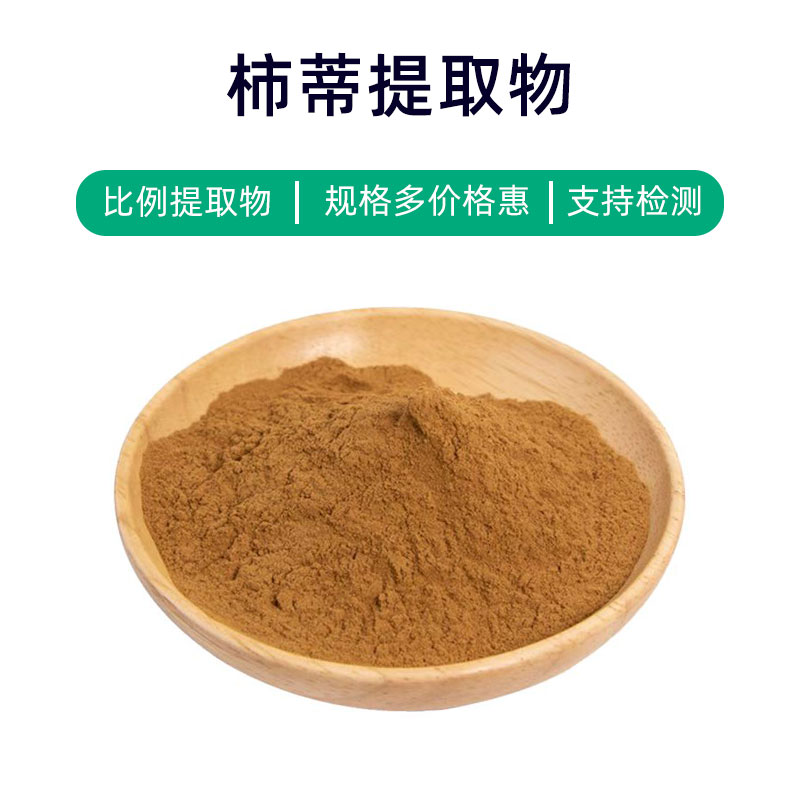Cat's Claw Extract Product Introduction
Cat's Claw Extract is a natural medicinal ingredient derived from the cat's claw plant found in the Amazon rainforest of South America. Its main components include catechins, cat's claw alkaloids, phenolic acids, and other active ingredients, which confer various effects and broad applications.
In terms of efficacy, Cat's Claw Extract is widely recognized for its immune modulation and anti-inflammatory properties. It helps enhance immune system function and boosts the body's resistance, aiding in the fight against infections and inflammatory responses. Additionally, research indicates that Cat's Claw Extract has antioxidant and anti-aging effects, helping to protect cells from damage caused by free radicals and slow down the aging process.
In applications, Cat's Claw Extract is extensively used in pharmaceuticals, supplements, and cosmetics. In the pharmaceutical field, it is commonly utilized as an immune modulator and anti-inflammatory agent for treating immune-related and inflammatory diseases. In dietary supplements, Cat's Claw Extract is made into oral supplements to enhance immune function, improve joint health, and promote overall wellness. In the cosmetics industry, Cat's Claw Extract is often included in formulations for antioxidant and anti-aging products, helping to protect the skin from environmental damage and delay signs of aging.
Overall, Cat's Claw Extract is a natural medicinal ingredient with multiple effects and wide applications. Its immune modulating, anti-inflammatory, and antioxidant properties make it a point of interest in the pharmaceutical, dietary supplement, and cosmetics industries.
Cat's Claw Extract Production Process
The production process of Cat's Claw Extract generally includes the following main steps:
- Raw Material Collection and Selection: First, cat's claw plants are collected from the Amazon rainforest, focusing on healthy roots and stems while removing impurities and damaged parts.
- Crushing and Grinding: The collected cat's claw plants are washed and processed, then crushed and ground into a powder. This step increases extraction efficiency and reduces energy consumption in subsequent processes.
- Extraction: The crushed cat's claw samples undergo solvent extraction to isolate the effective components. Common solvents include ethanol, water, and ethyl acetate. Extraction parameters such as temperature, time, and solvent concentration must be controlled to ensure effective extraction and product quality.
- Concentration and Filtration: The extract is concentrated to remove excess solvent and moisture, resulting in a concentrated liquid. Filtration processes are then used to remove suspended solids and impurities for a purer product.
- Drying: The concentrated liquid undergoes drying to convert it into powdered Cat's Claw Extract. Common drying methods include spray drying and vacuum drying, which help maintain the activity and stability of active components.
- Packaging and Storage: Finally, the dried Cat's Claw Extract is packaged with labels indicating production date, batch number, and ingredient information. The product should be stored in a dry, cool, and ventilated environment, protected from direct sunlight and moisture to ensure quality and stability.
This is the general production process for Cat's Claw Extract; each manufacturer may make adjustments based on their specific conditions and requirements.
Cat's Claw Extract Benefits and Side Effects
Cat's Claw Extract, as a herbal plant extract, has been extensively researched and applied in traditional herbal medicine and modern scientific studies. Its main benefits and effects include:
- Antioxidant Effects: Cat's Claw Extract is rich in various antioxidants such as polyphenols and flavonoids, which can neutralize free radicals and reduce oxidative stress damage to the body, helping to maintain cell health.
- Immune Modulation: Studies have shown that Cat's Claw Extract can regulate immune system function, enhance the body's resistance, and increase the activity of immune cells, which may help prevent and alleviate infectious diseases.
- Anti-Inflammatory Effects: The active components in Cat's Claw Extract may inhibit the release of inflammatory mediators, offering anti-inflammatory effects useful for treating arthritis and other inflammatory diseases.
- Anti-Tumor Effects: Some studies suggest that compounds in Cat's Claw Extract may inhibit the growth and spread of tumor cells, showing potential in cancer prevention and supportive treatment.
- Antibacterial Effects: Cat's Claw Extract has inhibitory effects on certain bacteria and fungi, making it useful for treating skin infections and respiratory infections.
- Digestive System Improvement: Cat's Claw Extract can stimulate digestive fluid secretion and enhance gastrointestinal motility, helping alleviate symptoms like indigestion and stomach pain.
- Cardiovascular Health Improvement: Research indicates that Cat's Claw Extract may help lower lipid levels, reduce blood pressure, and improve cardiovascular function, providing benefits for the prevention and treatment of cardiovascular diseases.
- Antidepressant Effects: Some studies indicate that Cat's Claw Extract may help stabilize mood and improve symptoms of depression, reducing anxiety and depressive feelings.
It is important to note that despite the various benefits of Cat's Claw Extract, there are potential side effects and precautions. Some individuals may experience allergic reactions, such as skin itching and redness. Long-term high-dose use may affect liver function, and interactions may occur when used with other medications. Therefore, it is best to consult a physician or pharmacist before using Cat's Claw Extract to prevent adverse reactions.
Cat's Claw Extract Applications and Dosage
Cat's Claw Extract has a wide range of applications in the pharmaceutical, food, and cosmetic fields. Below are key applications and dosage recommendations in these three areas:
- Pharmaceutical Applications:
- Immune Regulation and Enhancement: Cat's Claw Extract is used to produce immune modulators and health supplements aimed at strengthening the immune system, preventing infections, and boosting resistance.
- Anti-Inflammatory and Antioxidant: In traditional herbal medicine, Cat's Claw is used to treat inflammatory diseases like rheumatoid arthritis, providing anti-inflammatory and antioxidant actions.
- Supportive Cancer Treatment: Some studies indicate that Cat's Claw Extract may have a supportive role in cancer treatment, but it should be used under medical guidance.
- Food Applications:
- Health Foods: Cat's Claw Extract can be added to health foods like oral liquids and capsules to enhance immunity, provide antioxidants, and regulate bodily functions.
- Functional Foods: Some functional foods also include Cat's Claw Extract to improve product functionality, such as boosting antioxidant capacity and enhancing immune function.
- Cosmetic Applications:
- Skincare Products: Cat's Claw Extract's antioxidant and anti-inflammatory properties can be utilized in skincare products like creams and serums to soothe the skin and reduce inflammation.
- Hair Care Products: Cat's Claw Extract is also added to shampoos and conditioners to improve scalp health and reduce dandruff.
Dosage Recommendations:
- Oral Liquids/Capsules: Generally, it is recommended to take 1000-2000 mg per dose, 2-3 times daily, with specific dosages adjusted based on individual conditions and medical advice.
- Skincare Products: When using Cat's Claw Extract in skincare, follow product instructions, applying it to clean skin and gently massaging until absorbed.
- Shampoo/Conditioner: Apply an appropriate amount of the product to wet hair, gently massage the scalp and hair, and rinse thoroughly.
In summary, Cat's Claw Extract is widely used in pharmaceuticals, foods, and cosmetics, but it should be utilized according to individual conditions and product instructions to avoid excessive or inappropriate use.
Cat's Claw Source Plant Introduction, Distribution, and Growth Environment
Cat's Claw, scientifically known as Uncaria rhynchophylla, also referred to as Chinese Cat's Claw or Hook Vine, is a common herbal medicine plant that belongs to the Rubiaceae family. Below is an introduction to the source plant, its distribution, and growth environment.
Source Plant Introduction:
Cat's Claw is a perennial climbing vine with heart-shaped leaves and hook-shaped stems that have noticeable longitudinal stripes. The small, pale yellow flowers grow in the leaf axils, and the fruit is a cone-shaped aggregate that turns black when ripe. The main medicinal parts of Cat's Claw are the stems and leaves, which contain various active components with multiple medicinal values.
Distribution:
Cat's Claw primarily grows in the East, South, and Central China, including Fujian, Guangdong, Guangxi, Yunnan, Hunan, and Hubei. It is also found in countries and regions such as Japan, Korea, and Vietnam. In China, Cat's Claw is commonly found in mountainous areas, hillsides, grasslands at forest edges, and moist riverbanks, typically at altitudes below 1000 meters.
Growth Environment:
Cat's Claw thrives in warm, humid environments and is well-suited to sunny and fertile soil conditions. It is often found at the foot of mountains, on slopes, at forest edges, and by streams, where it typically grows interspersed with other plants. While it has no strict soil requirements, well-draining loose soil is preferable.
In the wild, Cat's Claw typically grows as a climbing vine, wrapping its stems and leaves tightly around surrounding trees or supports. It primarily reproduces through seeds but can also propagate through stem cuttings.
Overall, Cat's Claw is a common medicinal plant that grows in southern China and parts of Asia, demonstrating strong adaptability to its growth environment, often found in mountainous, forest-edge, and streamside moist areas. Its modest sunlight and soil requirements make it an important herbal material with significant medicinal value.
Cat's Claw Extract Processing and Storage
The processing of Cat's Claw Extract generally includes the following steps: First, fresh Cat's Claw is collected, then washed and preliminarily processed to remove impurities and external contaminants. Next, the Cat's Claw is crushed or chopped to increase its surface area, facilitating the extraction of active components. Subsequently, appropriate extraction methods such as water extraction, alcohol extraction, or supercritical fluid extraction are employed to retrieve the effective components from the material. Finally, after concentration, drying, and other steps, the finished Cat's Claw Extract is obtained.
For storage, Cat's Claw Extract should be kept in a dry, cool, ventilated area, away from direct sunlight and high temperatures to prevent moisture, mold, or loss of active ingredients. It is best to store the extract in opaque, airtight containers to avoid exposure to air and moisture, thus extending its shelf life. Regularly check the appearance and smell of the extract to ensure its quality and safety.
Monica Sun is a seasoned expert in the plant extraction industry with over a decade of experience in research and production. She specializes in the extraction and purification of plant active ingredients, focusing on driving innovation in natural product applications. Monica has participated in the development of multiple functional plant extracts, delivering high-value natural raw material solutions for the health food, pharmaceutical, and dietary supplement sectors.









